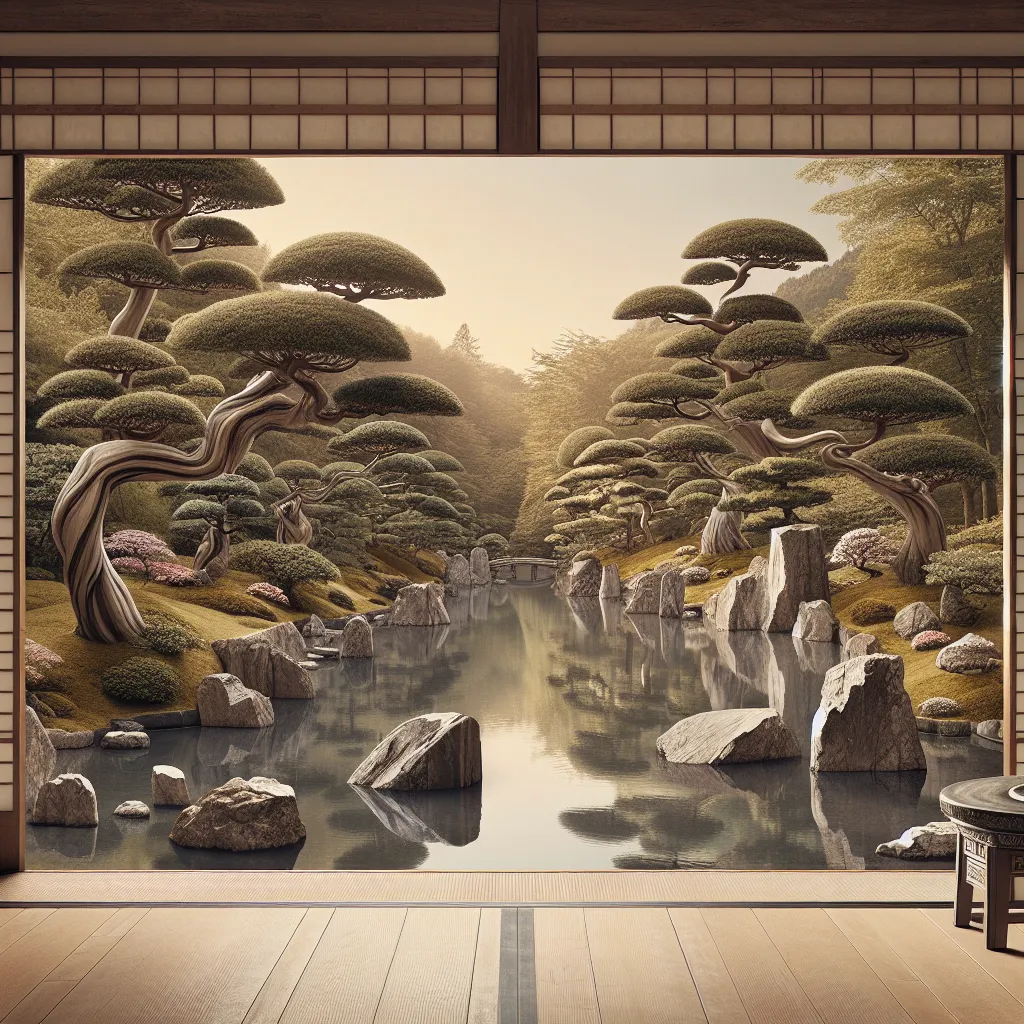
- Published on
- Authors

- Name
- You
The Zen Aesthetic: Simplicity and Beauty in Art and Life
Introduction
Zen Buddhism, a school of Mahayana Buddhism, emphasizes the value of simplicity and mindfulness. This philosophy profoundly influences Zen aesthetics, which emphasize simplicity, minimalism, and the inherent beauty of the natural world. The Zen aesthetic manifests in various art forms, architecture, and even in daily practices, guiding individuals towards a more mindful and serene existence.
Principles of Zen Aesthetic
| Principle | Description |
|---|---|
| Simplicity | Reducing elements to their essential form, avoiding unnecessary complexity. |
| Minimalism | Embracing the ‘less is more’ philosophy, focusing on what truly matters. |
| Naturalness | Harmonizing with nature, using natural materials, and celebrating imperfections. |
| Asymmetry | Appreciating balance in asymmetry, signifying the imperfection of life. |
| Subtlety | Valuing understatement and depth over ostentation. |
| Tranquility | Promoting a calm and meditative environment. |
Zen Aesthetic in Art
Calligraphy
Zen calligraphy is not just about writing but is a form of mindfulness and meditation. It emphasizes the process and the flow, capturing the present moment in each stroke.
Sumi-e Painting
Sumi-e, or ink wash painting, epitomizes simplicity and restraint. Using just black ink, artists create evocative landscapes and scenes that leave much to the imagination, embodying the principle of subtlety.
Ikebana
Ikebana, the Japanese art of flower arrangement, is a practice of balance, harmony, and minimalism. It often involves a few carefully chosen blooms arranged in a simple, naturalistic style.
Zen Aesthetic in Architecture
Wabi-Sabi
Wabi-Sabi is the art of finding beauty in imperfection and the natural cycle of growth and decay. This principle deeply influences Zen architecture, where natural materials and simple forms create tranquil spaces.
Karesansui (Zen Gardens)
Zen gardens, or ‘dry landscape’ gardens, are designed for meditation and contemplation. They typically consist of rocks, gravel, and minimal plant life arranged to evoke natural landscapes.
Shoji Screens
Shoji screens are a quintessential element of Zen architecture, used to partition spaces lightly and allow diffuse light, enhancing the sense of openness and tranquility.
Zen Aesthetic in Daily Life
Tea Ceremony (Chanoyu)
The Japanese tea ceremony is an embodiment of Zen principles, focusing on mindfulness, simplicity, and the appreciation of the moment.
Mindful Living
Incorporating Zen aesthetic into daily life means embracing simplicity and mindfulness in everyday actions, whether it's through mindful eating, decluttering living spaces, or practicing meditation.
Conclusion
The Zen aesthetic teaches us that true beauty lies in simplicity, naturalness, and mindfulness. By integrating these principles into our lives, art, and environments, we cultivate a deeper sense of peace and presence, embracing the profound yet often overlooked beauty in our everyday world. As we navigate the complexities of modern life, the Zen aesthetic offers a serene counterbalance, guiding us back to the simple essence of being.
References
- D.T. Suzuki, Zen and Japanese Culture
- John Daido Loori, The Zen of Creativity
- Katsuki Sekida, Zen Training: Methods and Philosophy
